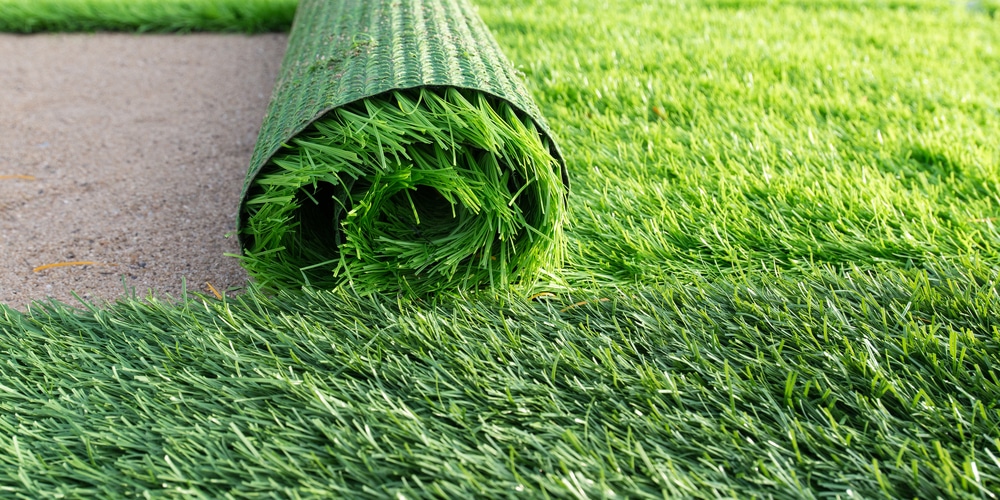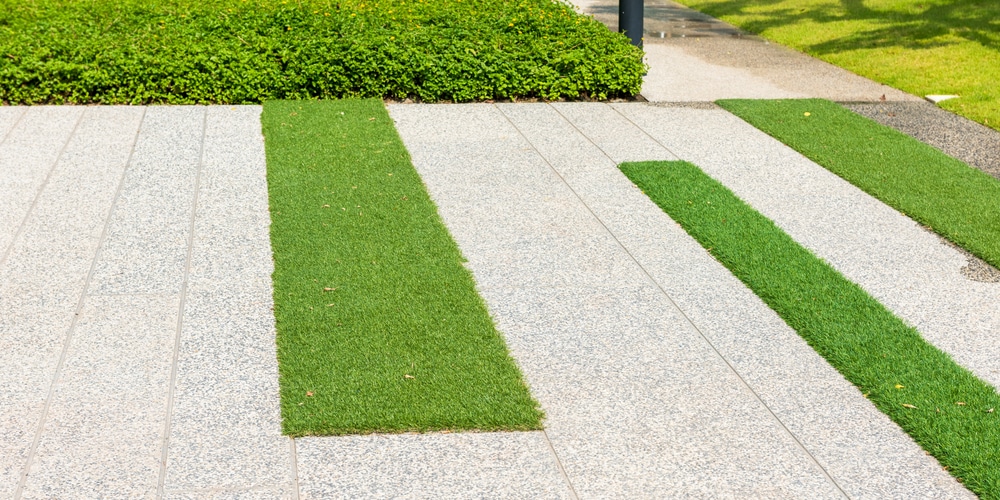Artificial grass is excellent as it is easy to care for, stays green year-round, and is an ideal surface for playing soccer and other sports. If you decide to install artificial grass in your yard, you’ll no longer have to worry about bare patches forming. Artificial grass is also a lot easier to maintain as it doesn’t need to be cut, aerated, or fertilized. There are differences in technique depending on whether or not you want to install artificial grass on dirt or concrete.
With a bit of DIY know-how, artificial grass can be installed either on dirt or concrete. Let’s look at how to install artificial grass expertly. We’ve provided a step-by-step guide for laying artificial grass on both dirt and concrete.
How to Install Artificial Grass on Dirt

Most people who install artificial grass do so over either dirt or their existing lawn. If you already have grass growing in your yard, it’s best to remove the turf first, rather than laying directly on top of the grass. Here are the steps to lay artificial grass on dirt:
1. Remove Your Existing Turf
If you’re planning to lay artificial turf on top of grass, you’ll first need to remove the turf and prepare the ground. Don’t install your artificial grass on top of grass and other plants. Although the lack of sunlight will kill the grass, the ground is likely to be uneven, and your artificial grass won’t be installed correctly.
You can use either a shovel or a small rototiller to break up the soil and lift the turf off. It’s best to remove between 1.5 inches to four inches of soil from the topsoil of your yard.
It’s also worth noting that the artificial grass will sit about 0.5-inch above any edging. You’ll need to dig slightly lower than paths or patios so that your artificial grass doesn’t end up sticking up above the surface. Ensure that you take proper measurements before laying your artificial grass.
2. Create a Base
You’ll then need to create a base on which to lay your artificial grass. To do this, cover the ground with a layer of either granite chips or crushed stone. Ensure that you spread the gravel out evenly. It’s also a good idea to moisten the gravel with a hose as this will help it become more compact. You can use a roller or compactor machine to create a solid base. Make sure you don’t overwater the gravel when attempting to compact it.
3. Stop Weeds From Growing
Before laying your artificial grass, it’s a good idea to install a weed barrier that can be underlaid beneath the grass. Weed barriers are made from durable material which will block weeds and stop them from growing through your artificial grass. A weed barrier will also help to stabilize your artificial grass.
4. Roll Out the Artificial Grass and Trim to Size
The next step is to roll out your grass. When doing this, you’ll need to be very careful not to disturb the weed barrier. You can then set the grass and, using a sharp knife, cut off any excess so that it fits your lawn. Make sure to cut the artificial grass on the backside so that you get a clean cut. This will help you get the correct fit around the perimeter of your yard.
5. Fasten the Artificial Grass
You can then use four-to-six-inch galvanized nails to fasten the artificial grass to the perimeter of your yard. Hammer the nails in at ten-to-twelve-inch intervals. Alternatively, use landscaping anchor pins to secure the fake grass.
6. Brush Your Grass
Often after laying artificial grass, the fibers are lying flat as the grass has been rolled up. You’ll need to brush the fibers to get them to stand upright again.
How to Install Artificial Grass on Concrete
Laying artificial grass over a patio or a concreted yard is an easier option. As concrete is a fixed substrate that is already level, preparation is much simpler.
Here are the steps to installing artificial grass on concrete
1. Prepare the Surface
You can either install your artificial grass directly on top of the concrete, or you can first install a sub-layer that will provide a cushioning effect. You’ll also need to use a self-leveling product if your concrete or patio is uneven.
Before using the self-leveling product, you’ll need to clean your concrete as the product will only adhere to a clean surface. Make sure you get rid of all dust and debris from your patio or concrete. If you decide to pressure wash or hose down your concrete, leave it to dry before proceeding.
Use the self-leveling product as instructed on the label or manufacturer’s website, and then wait for it to dry before laying your artificial grass. Before laying artificial grass, you may like to install underfelt. This will create a cushioning effect and make your lawn feel more natural.
2. Install the Artificial Grass
Once you’ve prepared your concrete, the next step is to unroll your artificial turf and lay it in your yard. Start at one end and unroll the turf, then cut off any excess using a sharp knife. Always cut on the backside of the grass, as this will allow you to create a snug fit. You can then fix any joins with joining tape and attach the edges with concrete nails.
3. Brush Your Artificial Lawn
After your artificial grass has been installed, you’ll need to brush it with a broom or a soft rack to get the fibers standing up. This will make your grass look great. Artificial grass will make your yard look beautiful for at least twenty years, as long as you take care of it correctly.
Conclusion
Artificial grass can look very stylish and allows you to have a beautiful green yard year-round. This type of grass is easy to care for and doesn’t need much maintenance. As long as it’s laid correctly and well cared for, it will last for over twenty years. Artificial grass can be laid on soil or concrete, following the above instructions.
